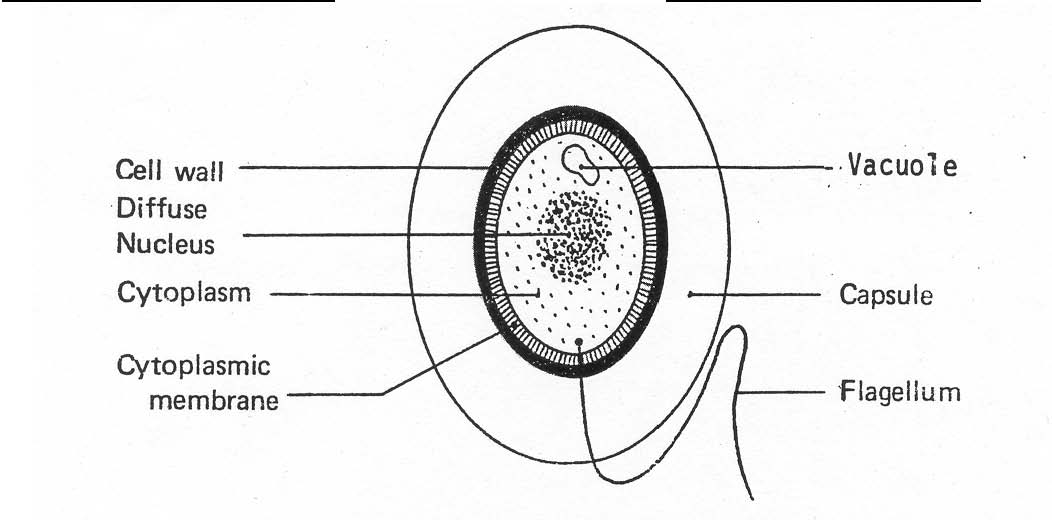Principles of Epidemiology and Microbiology
Lesson 2: Public Health Microbiology
Section II: Bacteria
2-8
2-8. STRUCTURE OF BACTERIA
The typical structure of a bacterial cell is shown in figure 2-6. It consists of the following general structures, found in all bacterial cells; and special structures, found in specific types of bacterial cells:
GENERAL STRUCTURES SPECIAL STRUCTURES
Figure 2-6. Bacterial cell structure.
a. General Structures.
(1) Cell wall. A cell wall is a layer of lipid and protein that encloses the protoplasm of the cell giving rigidity to the bacterial shape.
(2) Cytoplasmic membrane. A cytoplasmic membrane is a thin semi permeable membrane located directly beneath the cell wall, governing osmotic activity.
(3) Cytoplasm. The cytoplasm is the protoplasmic or vital colloidal material of a cell; the site of metabolic activities.
(4) Genetic material. Genetic material is a circular, single-stranded DNA diffused throughout the cytoplasm. It carries the genetic code of heritable traits and is responsible for directing metabolism and replication of the cell. The bacterial cell does not have a nuclear membrane or a well-defined nucleus.
b. Special Structures.
(1) Capsule. A capsule is relatively thick layer of mucoid polysaccharides (slime layer) around a bacterium. A capsule serves as a defense mechanism.
(2) Flagellum. A flagellum is a protoplasmic strand of elastic protein originating in the cytoplasmic membrane, and extending from the body of the cell. A flagellum serves as an
organ of locomotion. The arrangement of flagella (plural) is peculiar to the species.
(3) Spore. A spore is a metabolically resistant body formed by a vegetative bacterium, which is in a dormant state, to withstand an unfavorable environment. Only bacilli form spores. The position and size of a spore within a bacillus is peculiar to the species. Bacteria that are actively reproducing by fission do not produce spores (sporulate).
(4) Inclusion bodies. Inclusion bodies are vacuoles of reserve or waste materials contained within the cytoplasm.
(5) Ribosomes. Ribosomes is a site of protein production.


